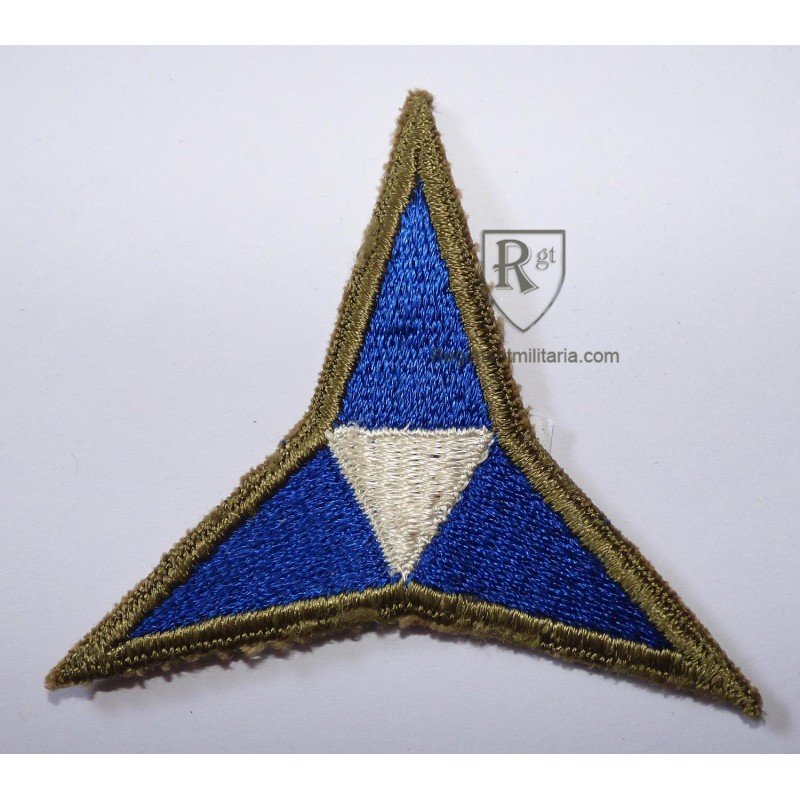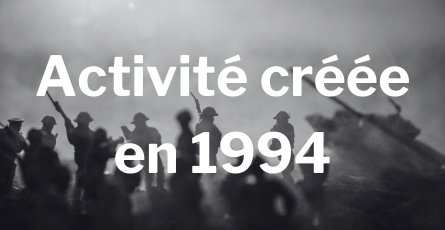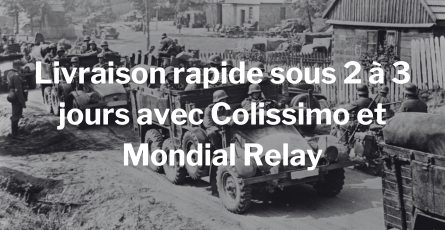
Reference: G2E263
Banner

Banner




3rd Corps OD border Patch.
 Garanties sécurité
Garanties sécurité
(à modifier dans le module "Réassurance")
 Politique de livraison
Politique de livraison
(à modifier dans le module "Réassurance")
 Politique retours
Politique retours
(à modifier dans le module "Réassurance")
3rd Corps Patch. original, WW2, OD border.
On 23 August 1944, the corps headquarters departed California for Camp Myles Standish in Massachusetts. It deployed for the European Theater of Operations (ETO) on 5 September 1944. Upon arrival at Cherbourg, France, III Corps, under the command of Major General John Millikin, was assigned to the Ninth Army, part of Lieutenant General Omar Bradley's U.S. 12th Army Group, and given the code name "CENTURY" which it retained throughout the war.[15] The corps headquarters was established at Carteret, in Normandy, and for six weeks, the corps received and processed all the troops of the 12th Army Group arriving over the Normandy beaches during that period. The corps also participated in the "Red Ball Express" by organizing 45 provisional truck companies to carry fuel and ammunition for the units on the front lines.
The "Red Ball Express" which III Corps helped organize.
The corps was assigned to Lieutenant General George S. Patton's Third Army on 10 October 1944, and moved to Etain, near Verdun, and into combat. The corps' first fighting was for the Metz region, as it was moved to attack Fort Jeanne d'Arc, one of the last forts holding out in the region. That fort fell on 13 December 1944.
Later that month on 16 December came the last German counteroffensive in the Battle of the Bulge, as over 250,000 German troops, supported by over 1,000 tanks and assault guns assaulted the lines of VIII Corps, some 40 miles to the north of III Corps. The next day Patton, the Third Army commander, warned III Corps that it would likely be ordered to assist. At that time the corps consisted of the 26th and 80th Infantry Divisions and the 4th Armored Division. III Corps was moved north to assist in the relief of Bastogne, Belgium, with the attack commencing at 04:00 on 22 December 1944. The corps advanced north, catching the German forces by surprise on their south flank, cutting them off. The 4th Armored Division was eventually able to reach Bastogne, where the 101st Airborne Division had been surrounded by German forces, and relieve it.[24] During the first 10 days of this action, III Corps liberated more than 100 towns, including Bastogne. This operation was key in halting the German offensive and the eventual drive to the Rhine River.
During the first four months of 1945, III Corps moved quickly to the offensive. On 25 February, the corps, now as part of the First Army, established a bridgehead over the Roer River, which, in turn, led to the capture of the Ludendorff Bridge at Remagen, on the Rhine River, on 7 March. On 30 March, the Edersee Dam was captured intact by Task Force Wolfe of the 7th Armored Division, and the corps, now commanded by Major General James Van Fleet after Millikin's relief, continued the attack to seize the Ruhr Pocket on 5 April 1945. In late April, III Corps reformed and launched a drive through Bavaria towards Austria. On 2 May 1945, III Corps was ordered to halt at the Inn River on the Austrian border, just days before V-E Day, when the German forces surrendered, bringing an end of World War II in Europe.
Reference: G2E263
Reference: F1E398
Reference: U2E690
Reference: U2E644
Reference: U2U190
Reference: A2E1285
Reference: F2E465
Reference: U2E755

3rd Corps OD border Patch.
check_circle
check_circle